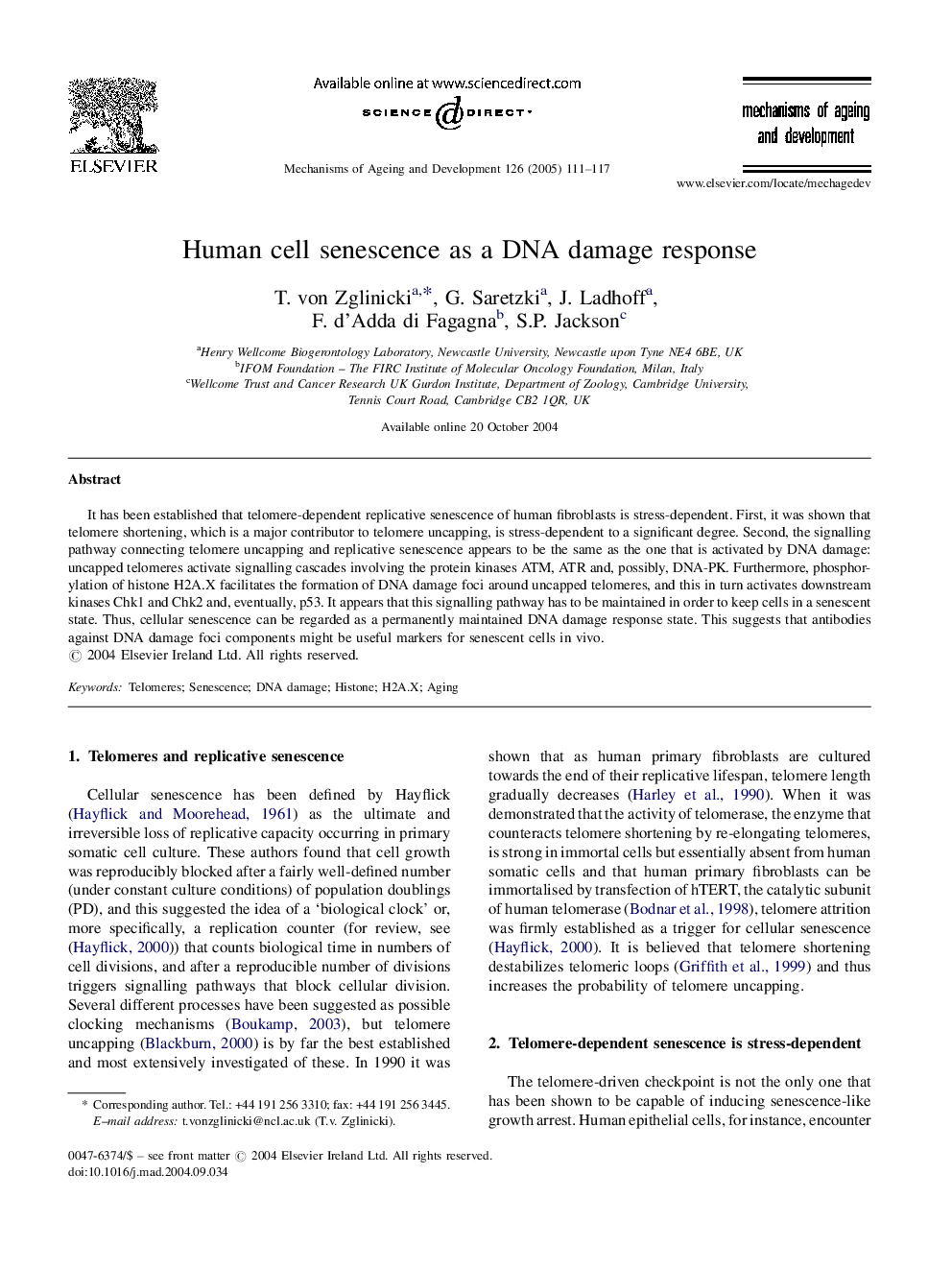| Article ID | Journal | Published Year | Pages | File Type |
|---|---|---|---|---|
| 9881388 | Mechanisms of Ageing and Development | 2005 | 7 Pages |
Abstract
It has been established that telomere-dependent replicative senescence of human fibroblasts is stress-dependent. First, it was shown that telomere shortening, which is a major contributor to telomere uncapping, is stress-dependent to a significant degree. Second, the signalling pathway connecting telomere uncapping and replicative senescence appears to be the same as the one that is activated by DNA damage: uncapped telomeres activate signalling cascades involving the protein kinases ATM, ATR and, possibly, DNA-PK. Furthermore, phosphorylation of histone H2A.X facilitates the formation of DNA damage foci around uncapped telomeres, and this in turn activates downstream kinases Chk1 and Chk2 and, eventually, p53. It appears that this signalling pathway has to be maintained in order to keep cells in a senescent state. Thus, cellular senescence can be regarded as a permanently maintained DNA damage response state. This suggests that antibodies against DNA damage foci components might be useful markers for senescent cells in vivo.
Related Topics
Life Sciences
Biochemistry, Genetics and Molecular Biology
Ageing
Authors
T. von Zglinicki, G. Saretzki, J. Ladhoff, F. d'Adda di Fagagna, S.P. Jackson,
